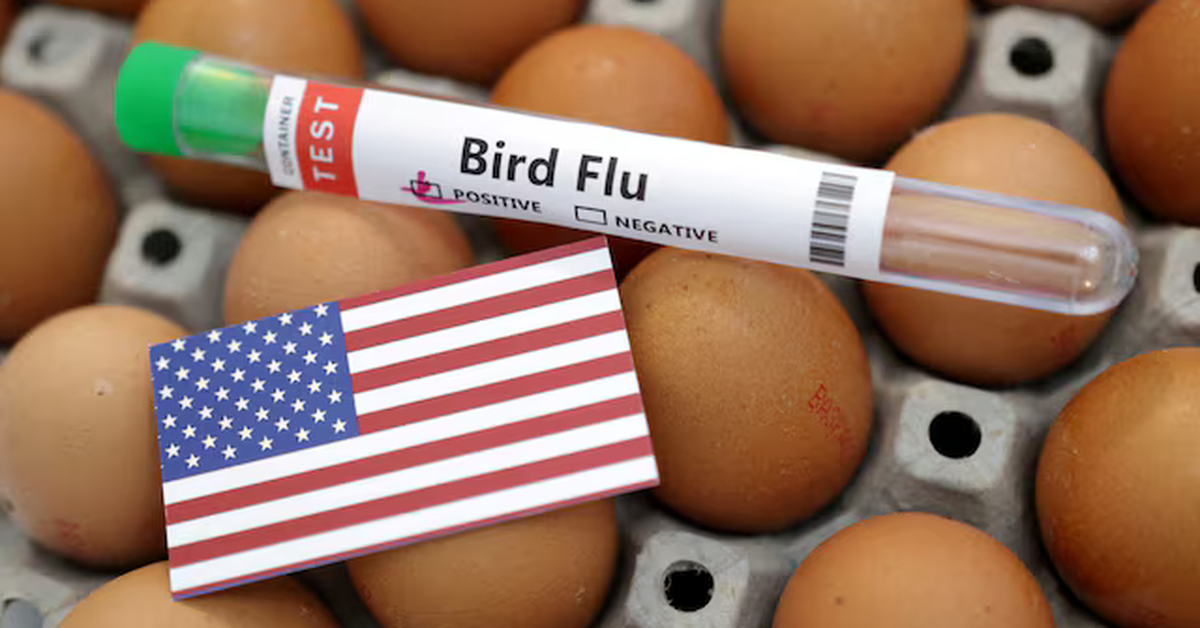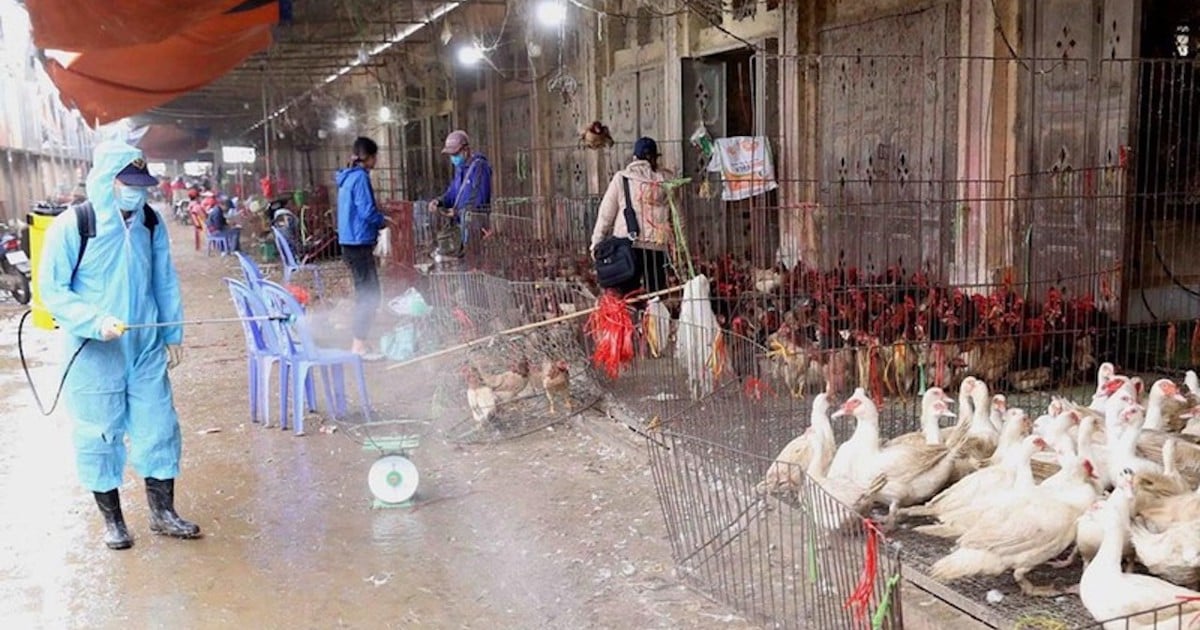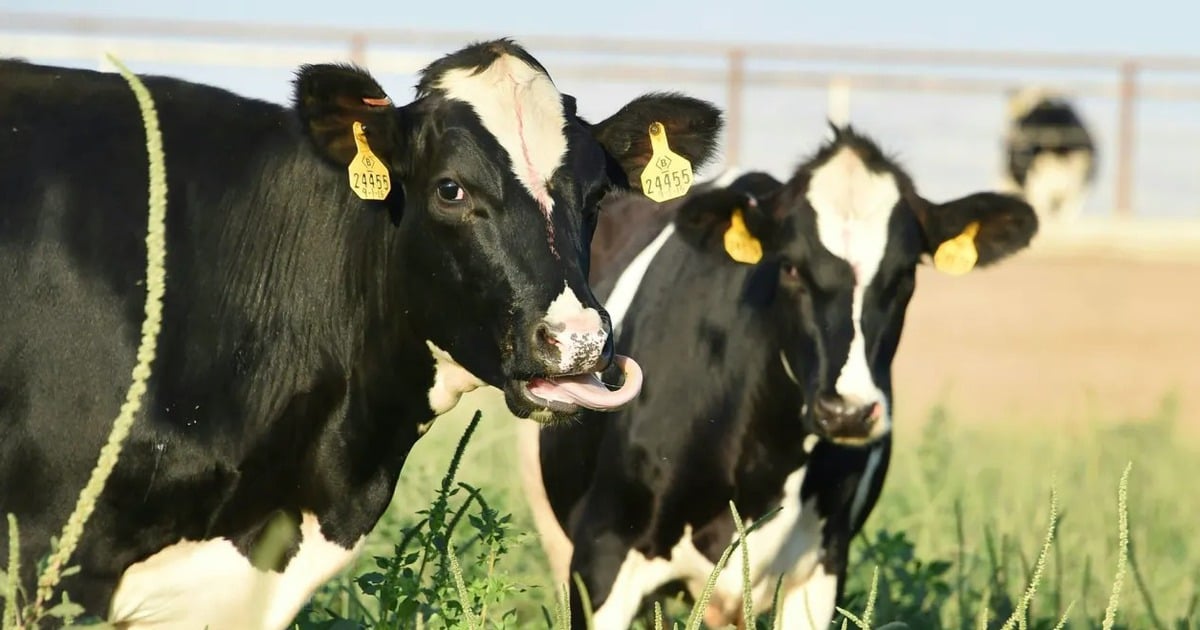
In an article published in The New York Times on April 5, 2024, the author cited evidence of “raising concerns” when avian influenza recently broke out in dairy cows in many states in the United States and there was at least one case of avian influenza in humans in the state of Texas.
The Centers for Disease Control and Prevention (CDC) and other agencies in the United States and elsewhere have been monitoring H5N1 for years to understand its progression. Although it has the potential to cause severe illness and death in humans, so far there have been only documented cases of people contracting the disease from infected animals, not from other people, the article said.
Previously, the New York Post on April 4 also cited a report from experts warning that the possibility of a bird flu pandemic could be 100 times worse than the COVID-19 pandemic, after a case of bird flu in humans appeared in Texas (USA).
The article said that experts expressed concern about the possibility of a new pandemic of the H5N1 bird flu strain. According to scientists, the virus is approaching the tipping point and could cause a global pandemic.
Dr. Suresh Kuchipudi, a renowned avian flu expert in Pittsburgh, warned at a recent press conference that because H5N1 can infect a wide range of mammals, including humans, “we are getting dangerously close to a virus that has pandemic potential,” he said.
Avian influenza itself is an animal pandemic.
According to the World Organization for Animal Health, from October 2021 to early 2023, the world recorded 42 million cases of avian influenza in both poultry and wild birds. 15 million birds died from infection and 193 million were culled. According to many experts, avian influenza itself is an animal pandemic. Avian influenza is a disease mainly in birds, breaking out in the fall and gradually decreasing in the spring and summer. According to Professor Paul Digard at the University of Edinburgh, avian influenza first appeared in ducks in Europe and Asia last century, then spread to birds. The strain of primary concern today is H5N1, first reported in China in 1996.
According to a report by the Food and Agriculture Organization of the United Nations (FAO) and the World Organization for Animal Health (WOAH), in the first two months of 2024, there were nearly 1,300 avian influenza outbreaks in more than 40 countries and territories.
In the world, from the end of 2023 until now, the situation of avian influenza in animals has been complicated, not only recording many outbreaks of avian influenza in all regions but also recording increasing transmission to mammals.
In its latest report, the World Health Organization (WHO) said that there were about 887 people infected with H5N1 avian influenza globally from January 2003 to February 26, 2024. Of these, 462 died, accounting for 52%. Most of the cases in humans were found to have been exposed to sick or dead poultry, or to live poultry markets or exposed to environments with the pathogen. Meanwhile, the mortality rate among people infected with COVID-19 is currently only 0.1%, although at the time of the pandemic outbreak, the mortality rate was about 20%.
Recently, Asia has continued to record outbreaks of avian influenza caused by many strains of influenza A virus such as H5N1, H5N6, H5N8, H3N2, H9N2, H10N3... Some countries bordering Vietnam continue to record human cases of avian influenza including H5N1, H9N2.
In Vietnam, after more than 8 years of no human cases of avian influenza, from 2022 to present, Vietnam has recorded 2 new cases, including 1 death on March 23, 2024. Then, on April 6, 2024, Vietnam recorded its first ever case of A/H9 influenza.
To date, there have been no recorded cases of human-to-human transmission of avian influenza in Vietnam or the world. However, these viruses continue to evolve globally and with the migration of wild birds, new strains of the virus may emerge with potential mutations that are harmful to mammals.
Recently, the European Union Food Safety Authority (EFSA) also warned about the possibility of a widespread bird flu pandemic if the virus spreads among humans due to humans' lack of immunity to this strain.
Previously, the United States had tested and developed two vaccines that were considered suitable candidates to prevent H5N1. However, there is still no specific treatment for avian influenza in humans, nor is there a vaccine to prevent the disease. While the A/H5N1 virus is a highly pathogenic strain of influenza, infected people often have severe progression and a high mortality rate (~50%).
Therefore, to proactively prevent and control avian influenza from spreading to humans, people need to properly implement the measures recommended by the Ministry of Health./.

Ministry of Health guides how to prevent bird flu from spreading to humans
Source


![[Photo] General Secretary To Lam receives French Ambassador to Vietnam Olivier Brochet](https://vstatic.vietnam.vn/vietnam/resource/IMAGE/2025/4/17/49224f0f12e84b66a73b17eb251f7278)

![[Photo] Nhan Dan Newspaper announces the project "Love Vietnam so much"](https://vstatic.vietnam.vn/vietnam/resource/IMAGE/2025/4/17/362f882012d3432783fc92fab1b3e980)
![[Photo] National Assembly Chairman Tran Thanh Man meets with outstanding workers in the oil and gas industry](https://vstatic.vietnam.vn/vietnam/resource/IMAGE/2025/4/17/1d0de4026b75434ab34279624db7ee4a)
![[Photo] Promoting friendship, solidarity and cooperation between the armies and people of the two countries](https://vstatic.vietnam.vn/vietnam/resource/IMAGE/2025/4/17/0c4d087864f14092aed77252590b6bae)
![[Photo] Closing of the 4th Summit of the Partnership for Green Growth and the Global Goals](https://vstatic.vietnam.vn/vietnam/resource/IMAGE/2025/4/17/c0a0df9852c84e58be0a8b939189c85a)

























![[Photo] Welcoming ceremony for Chinese Defense Minister and delegation for friendship exchange](https://vstatic.vietnam.vn/vietnam/resource/IMAGE/2025/4/17/fadd533046594e5cacbb28de4c4d5655)



























![[Video] Viettel officially puts into operation the largest submarine optical cable line in Vietnam](https://vstatic.vietnam.vn/vietnam/resource/IMAGE/2025/4/17/f19008c6010c4a538cc422cb791ca0a1)





































Comment (0)